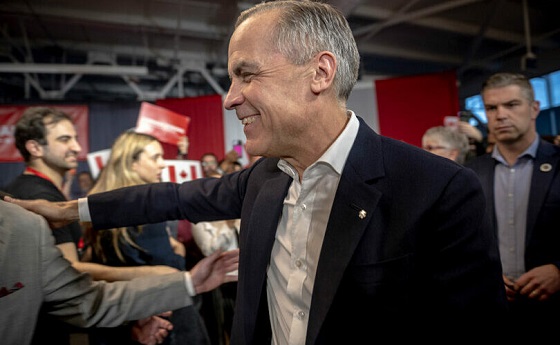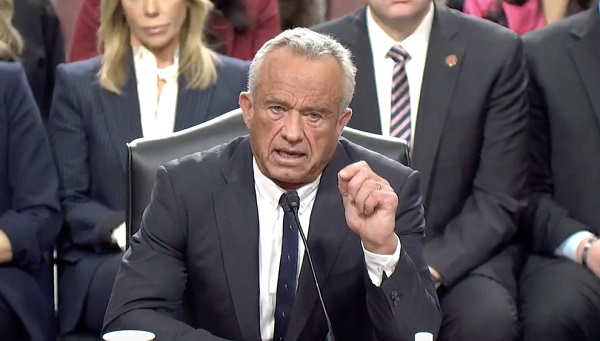Alberta
COVID19 spreading events – Premier Kenney asks Calgary and Edmonton residents to stop hosting gatherings

From the Province of Alberta
Strong public health measures are being implemented to protect the health system and limit the spread of COVID-19.
Expanded mandatory and voluntary limits on social gatherings are now in place to help reduce growing caseloads.
New COVID-19 measures
- Effective immediately, new mandatory and voluntary public health measures will help protect the health system and limit the spread of COVID-19.
- All Edmonton and Calgary residents should stop holding social gatherings within their homes and instead socialize in structured settings where it is easier to limit risk of exposure.
- The mandatory 15-person limit on social gatherings is being expanded to all communities on the watch list.
- Voluntary measures to limit cohorts to no more than three and to wear masks in the workplace unless able to safely distance are also strongly recommended for any community on the watch list, regardless of location.
- Additional measures to bolster Alberta’s public health response:
- AHS is prioritizing the hiring of about 380 additional contact tracing staff that will expand the contact tracing team to more than 1,100 people.
- To support contact tracing, all Albertans should download ABTraceTogether, Alberta’s contact tracing app.
- Alberta will also be shifting back to daily reporting of case numbers and information, including on weekends and holidays.
Latest updates
- To date, 24,684 Albertans have recovered from COVID-19.
- There are currently 6,822 active cases in the province.
- Over the last 48 hours:
- 802 new cases were identified on Nov. 4
- 609 new cases were identified on Nov. 5
- Alberta labs have now performed 1,869,192 tests on 1,305,540 people.
- There were nine additional deaths since Nov. 3, bringing the total number of COVID-19 deaths to 352.
- All zones across the province have cases:
- Calgary Zone: 2,886 active cases and 10,966 recovered
- South Zone: 398 active cases and 2,216 recovered
- Edmonton Zone: 2,819 active cases and 8,713 recovered
- North Zone: 431 active cases and 1,821 recovered
- Central Zone: 255 active cases and 914 recovered
- 33 active cases and 54 recovered cases in zones to be confirmed
- Additional information, including case totals, is online.
- There are 392 active cases and 1,631 recovered cases at continuing care facilities; 221 facility residents have died.
- School case information will be updated on Monday.
Updated contact tracing approach
- Alberta is piloting a targeted contact testing approach. This will make contact tracing faster and focus on populations at greatest risk of illness and further spreading COVID-19.
- Alberta Health Services will directly notify close contacts of confirmed COVID-19 cases in three priority groups only:
- health-care workers
- minors (parents will still be notified if their child has been exposed in a school setting)
- individuals who live or work within congregate or communal facilities
- AHS will no longer directly notify close contacts outside of these three priority groups, at this time.
- Albertans outside the priority groups who test positive will be asked to notify their own close contacts.
- AHS will continue to directly notify all positive cases of COVID-19 of their result, identify priority contacts that AHS will notify, and provide the case with guidance on notifying their own contacts.
Alberta
Red Deer Justice Centre Grand Opening: Building access to justice for Albertans

The new Red Deer Justice Centre will help Albertans resolve their legal matters faster.
Albertans deserve to have access to a fair, accessible and transparent justice system. Modernizing Alberta’s courthouse infrastructure will help make sure Alberta’s justice system runs efficiently and meets the needs of the province’s growing population.
Alberta’s government has invested $191 million to build the new Red Deer Justice Centre, increasing the number of courtrooms from eight to 12, allowing more cases to be heard at one time.
“Modern, accessible courthouses and streamlined services not only strengthen our justice
system – they build safer, stronger communities across the province. Investing in the new Red Deer Justice Centre is vital to helping our justice system operate more efficiently, and will give people in Red Deer and across central Alberta better access to justice.”

Government of Alberta and Judiciary representatives with special guests at the Red Deer Justice Centre plaque unveiling event April 22, 2025.
On March 3, all court services in Red Deer began operating out of the new justice centre. The new justice centre has 12 courtrooms fully built and equipped with video-conference equipment to allow witnesses to attend remotely if they cannot travel, and vulnerable witnesses to testify from outside the courtroom.
The new justice centre also has spaces for people taking alternative approaches to the traditional courtroom trial process, with the three new suites for judicial dispute resolution services, a specific suite for other dispute resolution services, such as family mediation and civil mediation, and a new Indigenous courtroom with dedicated venting for smudging purposes.
“We are very excited about this new courthouse for central Alberta. Investing in the places where people seek justice shows respect for the rights of all Albertans. The Red Deer Justice Centre fills a significant infrastructure need for this rapidly growing part of the province. It is also an important symbol of the rule of law, meaning that none of us are above the law, and there is an independent judiciary to decide disputes. This is essential for a healthy functioning democracy.”
“Public safety and access to justice go hand in hand. With this investment in the new Red Deer Justice Centre, Alberta’s government is ensuring that communities are safer, legal matters are resolved more efficiently and all Albertans get the support they need.”
“This state-of-the-art facility will serve the people of Red Deer and surrounding communities for generations. Our team at Infrastructure is incredibly proud of the work done to plan, design and build this project. I want to thank everyone, at all levels, who helped make this project a reality.”
Budget 2025 is meeting the challenge faced by Alberta with continued investments in education and health, lower taxes for families and a focus on the economy.

Quick facts
- The new Red Deer Justice Centre is 312,000 sq ft (29,000 m2). (The old courthouse is 98,780 sq ft (9,177 m2)).
- The approved project funding for the Red Deer Justice Centre is about $191 million.
Alberta
CPP another example of Albertans’ outsized contribution to Canada

From the Fraser Institute
By Tegan Hill
Amid the economic uncertainty fuelled by Trump’s trade war, its perhaps more important than ever to understand Alberta’s crucial role in the federation and its outsized contribution to programs such as the Canada Pension Plan (CPP).
From 1981 to 2022, Albertan’s net contribution to the CPP—meaning the amount Albertans paid into the program over and above what retirees in Alberta received in CPP payments—was $53.6 billion. In 2022 (the latest year of available data), Albertans’ net contribution to the CPP was $3.0 billion.
During that same period (1981 to 2022), British Columbia was the only other province where residents paid more into the CPP than retirees received in benefits—and Alberta’s contribution was six times greater than B.C.’s contribution. Put differently, residents in seven out of the nine provinces that participate in the CPP (Quebec has its own plan) receive more back in benefits than they contribute to the program.
Albertans pay an outsized contribution to federal and national programs, including the CPP because of the province’s relatively high rates of employment, higher average incomes and younger population (i.e. more workers pay into the CPP and less retirees take from it).
Put simply, Albertan workers have been helping fund the retirement of Canadians from coast to coast for decades, and without Alberta, the CPP would look much different.
How different?
If Alberta withdrew from the CPP and established its own standalone provincial pension plan, Alberta workers would receive the same retirement benefits but at a lower cost (i.e. lower CPP contribution rate deducted from our paycheques) than other Canadians, while the contribution rate—essentially the CPP tax rate—to fund the program would likely need to increase for the rest of the country to maintain the same benefits.
And given current demographic projections, immigration patterns and Alberta’s long history of leading the provinces in economic growth, Albertan workers will likely continue to pay more into the CPP than Albertan retirees get back from it.
Therefore, considering Alberta’s crucial role in national programs, the next federal government—whoever that may be—should undo and prevent policies that negatively impact the province and Albertans ability to contribute to Canada. Think of Bill C-69 (which imposes complex, uncertain and onerous review requirements on major energy projects), Bill C-48 (which bans large oil tankers off B.C.’s northern coast and limits access to Asian markets), an arbitrary cap on oil and gas emissions, numerous other “net-zero” targets, and so on.
Canada faces serious economic challenges, including a trade war with the United States. In times like this, it’s important to remember Alberta’s crucial role in the federation and the outsized contributions of Alberta workers to the wellbeing of Canadians across the country.
-

 2025 Federal Election2 days ago
2025 Federal Election2 days agoMark Carney Wants You to Forget He Clearly Opposes the Development and Export of Canada’s Natural Resources
-

 International1 day ago
International1 day agoPope Francis’ body on display at the Vatican until Friday
-

 2025 Federal Election2 days ago
2025 Federal Election2 days agoCanada’s pipeline builders ready to get to work
-

 Business2 days ago
Business2 days agoHudson’s Bay Bid Raises Red Flags Over Foreign Influence
-

 2025 Federal Election23 hours ago
2025 Federal Election23 hours agoFormer WEF insider accuses Mark Carney of using fear tactics to usher globalism into Canada
-

 2025 Federal Election9 hours ago
2025 Federal Election9 hours agoCarney’s Hidden Climate Finance Agenda
-

 COVID-191 day ago
COVID-191 day agoRFK Jr. Launches Long-Awaited Offensive Against COVID-19 mRNA Shots
-

 2025 Federal Election1 day ago
2025 Federal Election1 day agoCanada’s press tries to turn the gender debate into a non-issue, pretend it’s not happening



